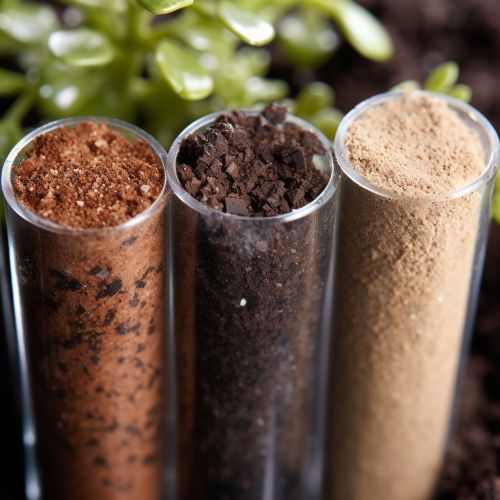Soil Moisture
Introduction
Soil moisture, also known as soil water content, is a key variable in understanding the hydrological cycle and the health of our ecosystems. It refers to the water stored in the soil within reach of plant roots. Soil moisture is a critical component in the life of plants, influencing their growth and survival. It also plays a significant role in the weather and climate patterns, as it affects the amount of water that evaporates from the land into the atmosphere read more.


Understanding Soil Moisture
Soil moisture is typically expressed as a ratio, representing the volume of water divided by the total volume of the soil sample. This ratio is often expressed as a percentage. The soil moisture content can range from 0% (completely dry) to saturation (when all the pores in the soil are filled with water). The amount of moisture that a soil can hold depends on its texture and structure, with clay soils typically holding more water than sandy soils learn more.
Measurement of Soil Moisture
There are several methods for measuring soil moisture, each with its own advantages and disadvantages. These methods can be broadly divided into direct and indirect methods. Direct methods involve physically removing a soil sample and measuring the amount of water it contains. This can be done through gravimetric methods, which involve weighing the soil before and after drying it to determine the water content. Indirect methods, on the other hand, estimate soil moisture based on the properties of the soil or the water itself. These methods include time domain reflectometry (TDR), neutron scattering, and capacitance probes read more.
Factors Influencing Soil Moisture
Several factors influence the amount of moisture in the soil. These include precipitation, temperature, wind speed, solar radiation, and the type of vegetation cover. The physical properties of the soil, such as its texture, structure, and organic matter content, also play a significant role. For example, soils with a high clay content can hold more water than sandy soils. Similarly, soils rich in organic matter can retain more water than those with low organic matter content learn more.
Role of Soil Moisture in Ecosystems
Soil moisture plays a critical role in ecosystems, influencing a wide range of processes. It affects the growth and survival of plants, as it is a primary source of the water they need for photosynthesis. Soil moisture also influences the activity of soil organisms, including bacteria, fungi, and earthworms, which play a crucial role in nutrient cycling and soil formation. Moreover, soil moisture affects the temperature and humidity of the air above the ground, influencing local weather and climate patterns read more.
Soil Moisture and Agriculture
In agriculture, soil moisture is a critical factor determining the success of crop production. Adequate soil moisture is necessary for seed germination, plant growth, and crop yield. Farmers and agronomists often monitor soil moisture levels to determine when to irrigate and how much water to apply. Soil moisture information can also help in managing the risk of crop diseases and pests, which can be influenced by the moisture conditions in the soil read more.
Soil Moisture and Climate Change
Changes in soil moisture patterns are expected under future climate change scenarios. Warming temperatures can increase evaporation rates, potentially leading to drier soils in some regions. On the other hand, changes in precipitation patterns can lead to increased soil moisture in other regions. These changes can have significant impacts on agriculture, water resources, and ecosystems read more.
